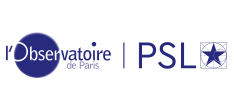Testing the universality of free fall using correlated 39K–87Rb atom interferometers
Résumé
We demonstrate how simultaneously operated 39K–87Rb interferometers exhibiting a high level of correlation can be used to make competitive tests of the university of free fall. This work provides an overview of our experimental apparatus and data analysis procedure, including a detailed study of systematic effects. With a total interrogation time of 2T=40 ms in a compact apparatus, we reach a statistical uncertainty on the measurement of the Eötvös parameter of 7.8×10−8 after 2.4×104 s of integration. The main limitations of our measurements arise from a combination of wavefront aberrations, the quadratic Zeeman effect in 39K, parasitic interferometers in 87Rb, and the velocity sensitivity of our detection system. These systematic errors limit the accuracy of our measurement to η=0.9(1.6)×10−6. We discuss prospects for improvements using ultracold atoms at extended interrogation times.

